Many plants have waxy leaves that are covered in a substance called cutin. This helps the plant to survive by preventing water loss and damage from insects and other animals.
There are many different types of plants with waxy leaves such as eucalyptus, pine trees, palms, magnolias, and cycads. Some people might think it is strange that some of these plants live in climates where there is not much rain or humidity. However, the waxy leaves allow them to thrive because it helps them retain moisture, despite not getting as much external water source like rainfall.
Plants with Waxy Leaves
Here’s a list of my favorite plants with waxy leaves:
1. Swiss Cheese Plant (Monstera Deliciosa)
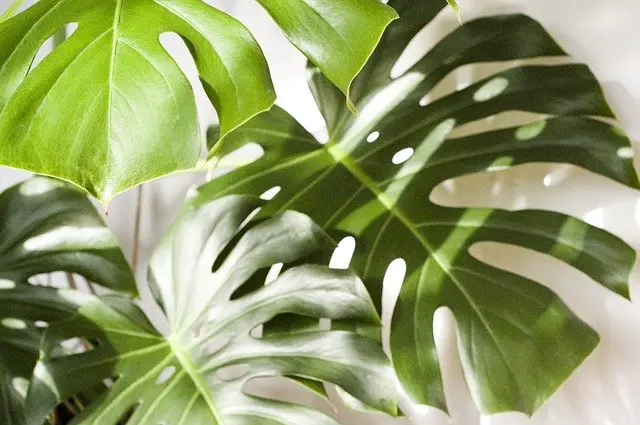
The Swiss cheese plant is a vine that produces large green leaves with either white or yellow-green veins. They are often grown as house plants because they can grow up to 30 feet tall in the right conditions. The vines have aerial roots, which help them cling on and attach themselves to other objects such as trees or buildings so that they do not need any soil for support.
Their waxy leaves allow this type of plant to thrive even without getting rain or humidity like many others might need. It has an interesting shape and texture especially if you look at it from underneath where there are holes all over the surface of the leaf which gives it its name “Swiss Cheese Plant.” This common tropical species prefers warm moist climates.
2. Rubber Fig (Ficus Elastica)
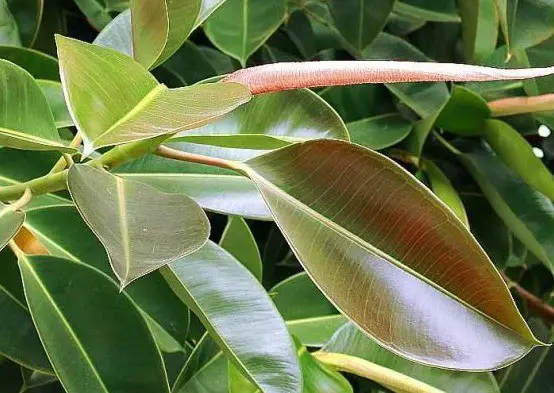
The Rubber Fig is an example of a plant with waxy leaves. This tree can grow up to 50-80 feet tall and has branches that are usually drooping or hanging down. The figs on this tree ripen in winter and the fruit is edible but not very tasty (it tastes like rubber). The latex sap from these trees was used as natural rubber before synthetic materials became popular for use in tires, hoses, etc…
These plants have also been shown to be resistant against some pests so there may be potential economic benefits if we start using them more often when planting.
3. Zanzibar Gem (Zamioculcas Plant)

Zamioculcas zamifolia, also known as the Zanzibar Gem or African Umbrella Tree, is a species of flowering plant in the family Araceae. It originated from eastern Africa and Southern Asia where it grows on rocky hillsides near waterfalls.
This type of plant does not tolerate frost well so people who live in colder climates might want to consider getting an artificial version instead since this variety cannot survive outside during cold weather months.
This plant is not poisonous, but it does cause contact irritation and dermatitis in some people. It also produces pollen that may trigger allergies for those sensitive to bee stings.
Some care instructions should include watering this plant once every week or so, fertilizing it twice per month with balanced liquid fertilizer diluted by half strength, gently pruning back any dead branches on occasion, and re-potting annually into pots one size larger than its current container.
4. Mistletoe Fig (Ficus Deltoidea)
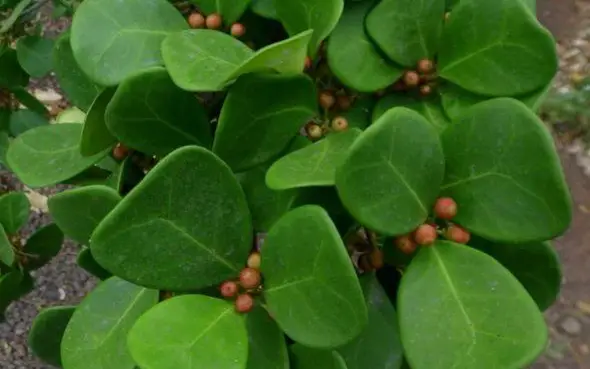
The Mistletoe Fig is a tree that can grow up to 40 meters (131 feet) in height. It has waxy leaves which are green, yellow-green or even red when they mature and the bark on younger trees is deep gray-brown with vertical cracks.
Mistletoe Figs have been found growing as far north as Southern Israel where their native habitat includes dry areas like deserts not too hot nor too cold for them because of how high up it lives off the ground while still being close to water sources such as oases or springs.
They typically live near rivers that flow through arid regions but range from sea level all the way up to 3000m elevation in places like Oman.
They are typically planted outside of their native habitat because they grow quickly and provide shade for people working underneath them especially important when it is hot out but also work to keep things cool during midday while blocking strong winds from blowing across a desert landscape.
5. Anthurium
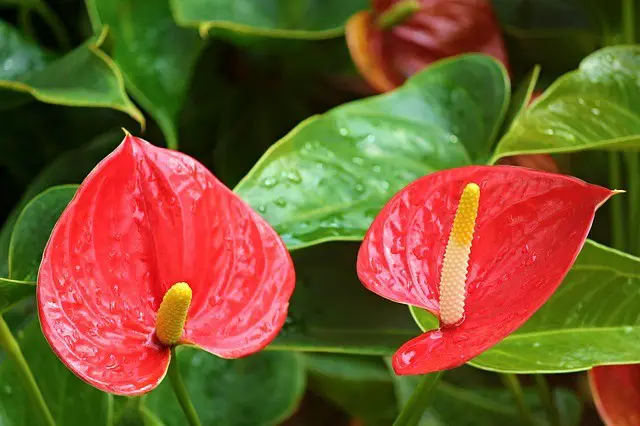
The Anthurium plant is not just an indoor plant, it can also be grown outdoors. One of the reasons why people grow these plants outside their homes or offices is because they are so easy to care for and maintain.
They require less water than most other flowers which makes sense since they have waxy leaves that retain a lot of moisture. This helps them thrive in dry climates where there may not be much rain or humidity available as well. These plants usually blossom with bright colors during spring weather when there is more light and warmth to help them produce blooms quicker
Some common types of this flower include: pink, red, white, camouflage green, yellow (gold), and blue stripes on dark green background (blue).
6. Jade Plant (Crassula Spp.)
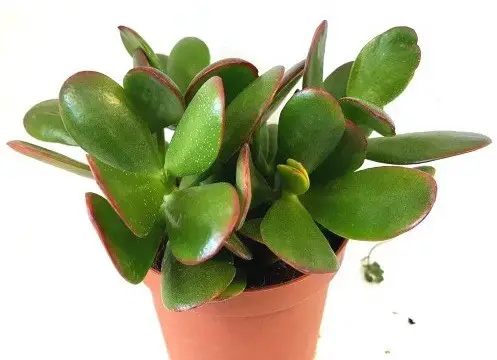
The Jade Plant has waxy-looking leaves, and it is one of the easiest plants to grow indoors because they do well in low light conditions. They are also very easy to propagate by cutting small branches or stems from a larger plant. The jade plant can be propagated this way year round but propagating during springtime will result in more vigorous growth for that new branch.
Jade plants are native to South Africa. Jade plants are not frost-hardy and should be kept in a warm area such as on the sunniest window sill indoors or outdoors, so it can absorb maximum sunlight for healthy growth.
7. Bromeliad
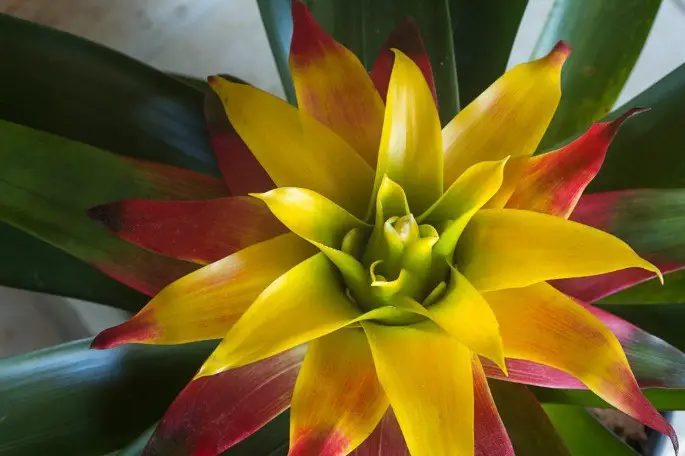
The Bromeliad is a plant that most commonly grows in tropical climates. This type of plant has leaves with wax on them, which helps to prevent water loss and damage from insects and other animals.
Bromeliads, dainty plants native to the tropics, transform into colors just before they die. These plants require lots of light and humidity.
8. Peace Lily

The peace lily flower is native to the tropics and comes from the Araceae family. The peace lilly plant has long, slender stems and usually grows to about three feet in height. It can be found growing outside on an ornamental garden or inside a conservatory.
They only blossom once during their life cycle when they reach maturity – from late summer to early fall. If you’re thinking that these plants don’t sound hardy enough for your area’s climate, think again!
A peace lily may seem like a flower, but the white “flowers” are actually modified leaves that are known as spathes.
9. Hoya Carnosa
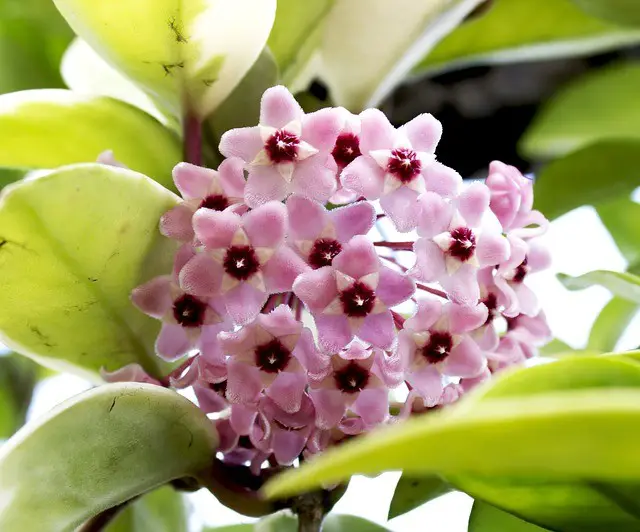
The hoya carnosa is a species of evergreen vine that is native to the tropics. It has waxy leaves along with fleshy, tendrilly vines that can grow up to 20 feet in length.
The plant is originally from China and India but was introduced to Europe during colonial times when it became very popular as a houseplant due to its ability not only for surviving without much water but also because it produces flowers year-round which are often small and white or pinkish in color.
10. Heartleaf Ice Plant (Mesembryanthemum Cordifolium)
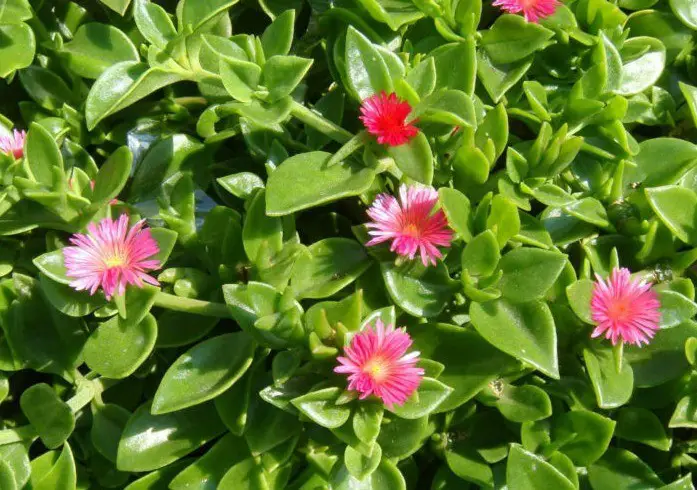
The heartleaf ice plant is a succulent that is native to south America. it has a stem around one inch in diameter and can grow up to two feet tall.
The heartleaf ice plant thrives in arid regions due to its ability to retain moisture despite not having much external sources like rainfall or humidity. These adaptations help the Mesembryanthemum Cordifolium survive even when there isn’t frequent rainfall.
11. Carissa Holly
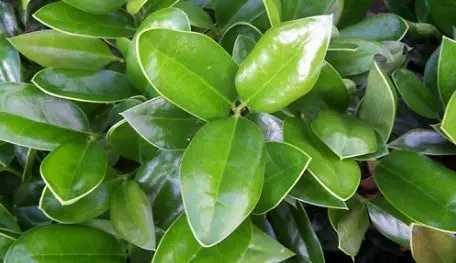
The carissa holly is a plant with waxy leaves that is nicknamed the Christmas tree. Carissa hollies are native to southern Africa but they grow in many other areas as well, so you might find them at your local garden center during this time of year. The carissa holly has a cone-shaped shape and glossy green leaves.
The carissa holly gets its name because it blooms around Christmastime when all other plants have lost their flowers for the season. The blossoms are small pinkish red berries that form clusters on long branches, which can reach up to 20 feet tall! This plant usually lives about ten years before wilting away after producing seeds for future generations.
12. Swedish Ivy
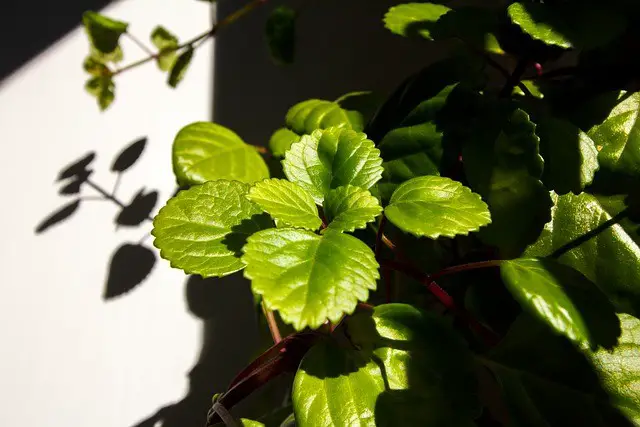
The Swedish ivy , or plectranthus, is a perennial vine that’s found in tropical climates. Swedish ivy has waxy leaves because the plant needs to protect itself from harsh sun and dry winds.
Plectranthus plants grow near trees which provide shade for them during the day while they also get moisture from being close to their roots at night when it rains.
In addition to having waxy leaves, Plectranthus plants have white flowers with purple spots on the inside of each petal which are usually shaped like a heart shape surrounding small yellow centers and bracts (leaf-like structures) beneath these flowers called spathes.
13. Radiator Plant (Peperomias)

The radiator plant is a small, easy to grow plant that does not require much water. It is often used as ground cover or in containers because it has an interesting appearance and needs little care. The leaves are waxy and shaped like radiators with their ribs on the outside of each leaf.
The radiator plant is native to Central America, but can be found growing wild all over South Florida too. They prefer shady areas (especially under trees) where there isn’t much competition for sunlight from other plants so they thrive quite well even though there might not be very many hours of direct sun every day.
14. Pothos
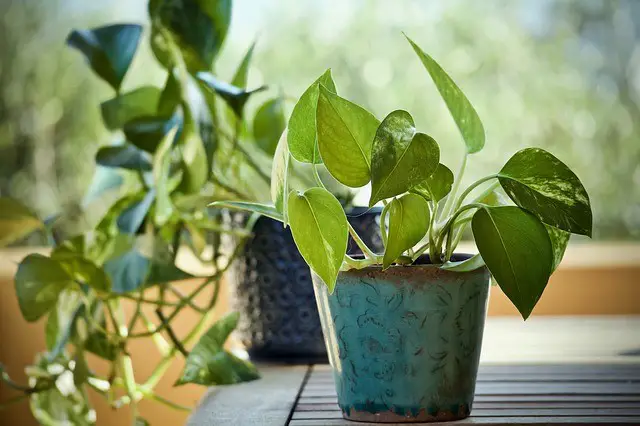
It’s now time for one of my favorite plants. You will find many articles on my site about this beautiful waxy plant.
Pothos plants are native to Australia, where they grow in the rainforest. They can also be found throughout Southeast Asia and are popular as indoor plants because of their tolerance to neglect.
Pothos has waxy leaves that are green with white or yellow stripes on them, but these colors may vary depending on the variety. The plant is named after a Greek word meaning “to creep” because it grows at ground level and climbs up other surfaces by clinging onto them with specialized aerial roots called vinyasas which hang down from its stems like vines.
Pothos also produces small flowers that produce berries containing seeds, although this will not happen if you propagate pothos through cuttings rather than seedlings since they do not flower when grown indoors
People who want to help their pothos plant thrive should make sure it gets plenty of light by placing it near windows or outside during warm months. If this plant does get too wet, then many people recommend misting them rather than watering them deeply since pothos do well when there isn’t standing water for long periods of time.
15. Echeveria Succulent

The echeveria plant is one of the most popular succulent plants. It is a flowering plant, which has waxy leaves that help it retain water in order to survive drought conditions with little rain or humidity. Echeveria flowers have bright colors such as pink and red.
Echeverias are also great greenhouse plants because they can tolerate low light levels better than other types of succulents, like cacti. They do not flower often when grown indoors but usually produce offspring through their leaf cuttings called basal offsets.
Conclusion
So, that’s a list of our top plants with waxy leaves! I hope you have enjoyed this article and have learned something new today.
To conclude, these types of plant can do well without much rainfall because their leaf coating helps them retain water even during times when there is not as much rain or humidity around.
